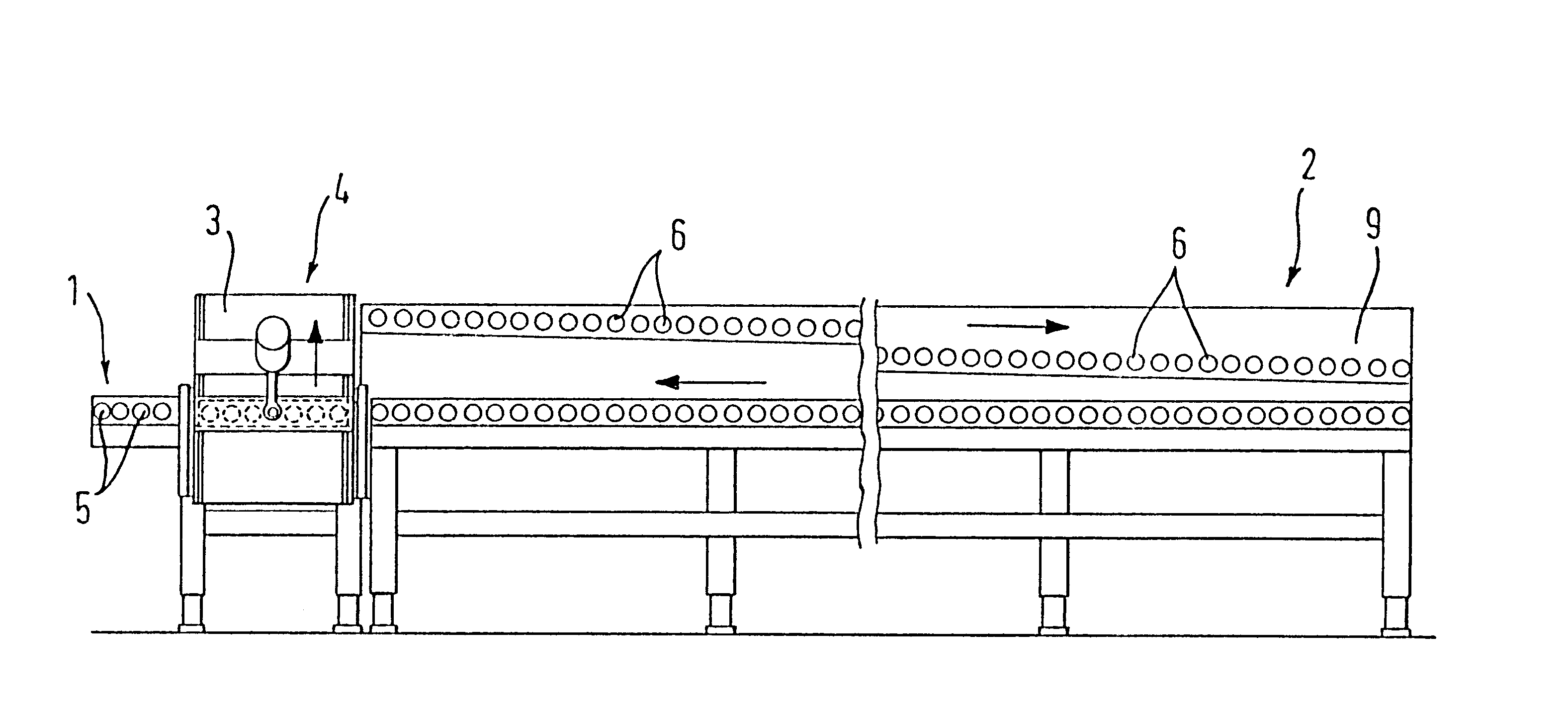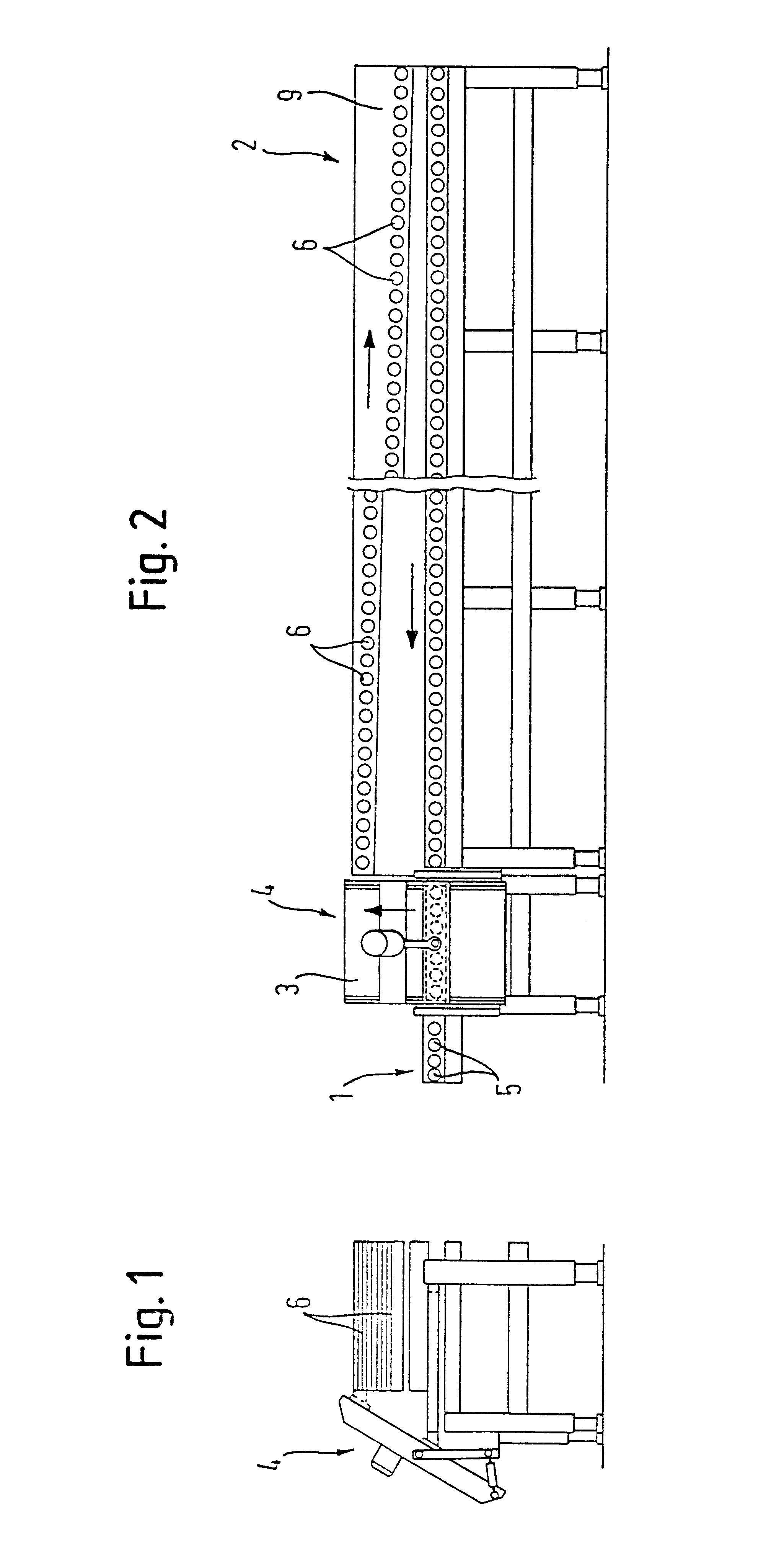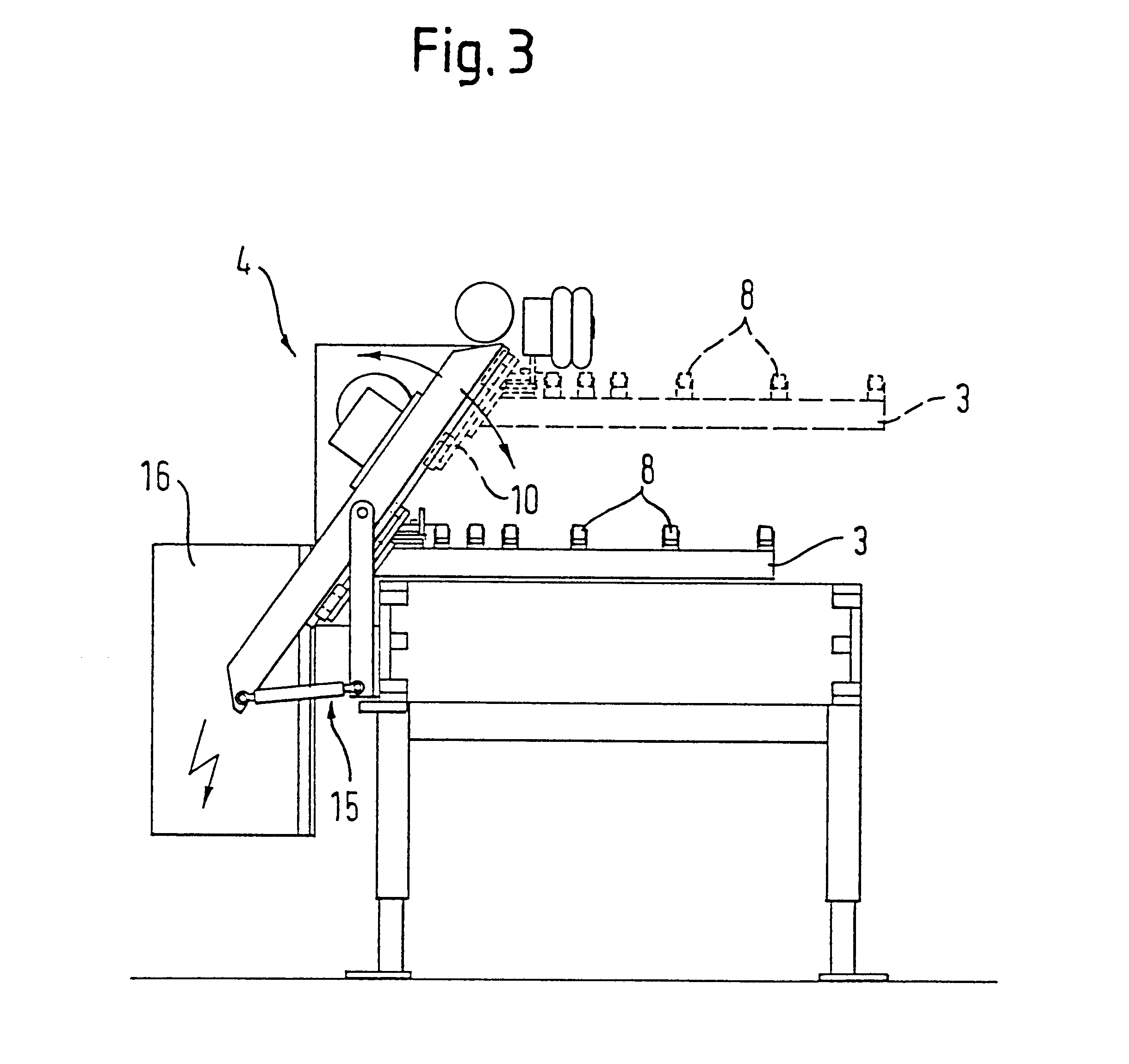Crank drive for returning work pieces
a crank drive and work piece technology, applied in conveyors, furnace components, lighting and heating apparatuses, etc., can solve the problems of preventing an optimal utilization of the processing unit, occupying a large amount of space alongside the processing machine, and consuming a lot of time and cos
- Summary
- Abstract
- Description
- Claims
- Application Information
AI Technical Summary
Benefits of technology
Problems solved by technology
Method used
Image
Examples
Embodiment Construction
FIGS. 1 to 4 show a preferred embodiment of the mechanism of the invention for returning processed work pieces, with the mechanism being shown in FIGS. 1 and 3 as a side view and in FIGS. 2 and 4 as a rear view.
The mechanism according to the invention is attached to an already existing processing unit (not shown), for example, to an edge attachment device for pressing-in bridge edges into the edges of wooden work pieces having the form of plates. The work pieces 7 (FIG. 4) pass from the processing unit into a transfer mechanism 1 (in FIGS. 1 and 3: into the plane of the drawing, and in FIGS. 2 and 4: to the left) and are then lifted by means of a lifting mechanism with a lifting platform 3 to a return mechanism 2 which transports the work pieces 7 back to the loading side of the processing unit (in FIGS. 1 and 3: out of the plane of the drawing, and in FIGS. 2 and 4: to the right).
The lifting mechanism according to the invention has a crank drive 4 by means of which the lifting plat...
PUM
 Login to View More
Login to View More Abstract
Description
Claims
Application Information
 Login to View More
Login to View More - R&D
- Intellectual Property
- Life Sciences
- Materials
- Tech Scout
- Unparalleled Data Quality
- Higher Quality Content
- 60% Fewer Hallucinations
Browse by: Latest US Patents, China's latest patents, Technical Efficacy Thesaurus, Application Domain, Technology Topic, Popular Technical Reports.
© 2025 PatSnap. All rights reserved.Legal|Privacy policy|Modern Slavery Act Transparency Statement|Sitemap|About US| Contact US: help@patsnap.com



